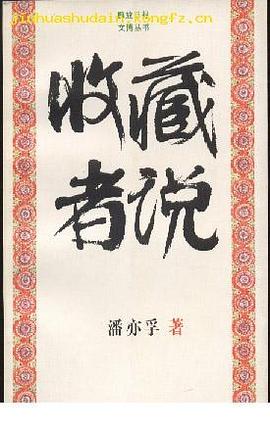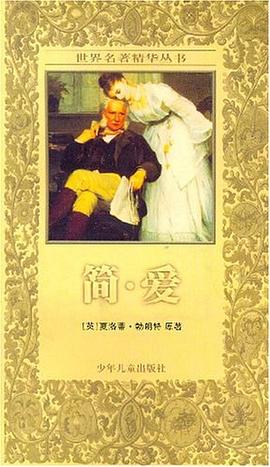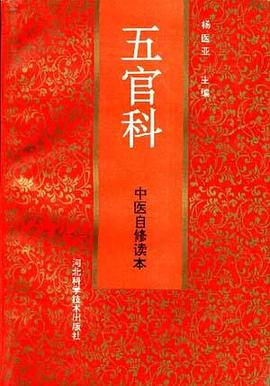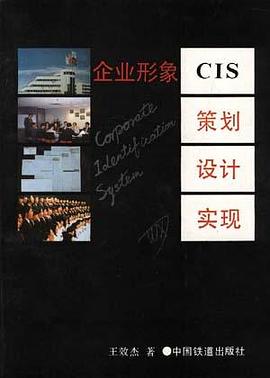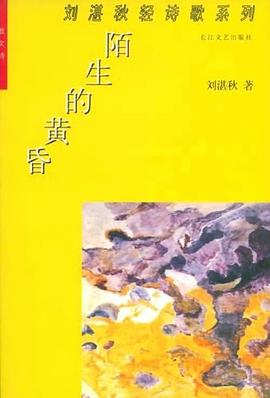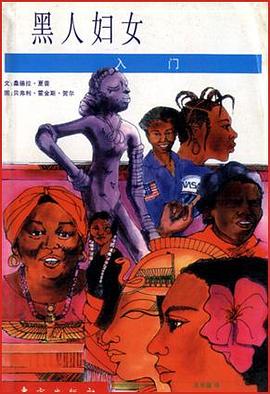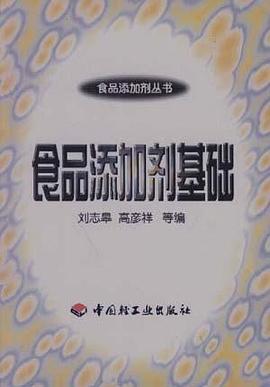CONTENTS
PREFACE
PART A
General Introduction l Mechanisms and Principles of Acupuncture and Moxi-
bustion Therapy
A. Mechanisms of Acupuncture and Moxibustion Therapy
1. Dredging Meridians, Regulating Qi and Blood Circulation
2. Reinforcing Deficiency and Reducing Excess Strengthening Body Resistance to Remove
Pathogenic Factors
3. Equtlibrating Yin and Yang, Regulating Physical Functions
B. Treatment Principle of Acupuncture and Moxibustion
l. Remforcing Deficiency and Reducing Excess
1) Reinforcing Deficiency
(1) Reinforcing the Diseased Meridian
(2) Reinforcing the Exterior-lnterior Meridian
(3) Reinforcing the Mother Organ Meridian
2) Reducing Excess
(1) Reducing the Diseased Meridian
(2) Reducing the Exterior-lnterior Meridian
(3) Reducing the Son Organ Meridian
3) Reinforcing and Reducing in Combination
2 Clearing Away Heat and Warming Cold
1) Clearing Away Heat
(1) Cleanng Away Exterior Heat
(2) Clearing Away Interior Heat
a. Clearing Away Lung Heat
b. Removing Heat in the Liver and Gallbladder
c. Removing Heat in the Spleen and Stomach
(3) Removing Deficiency Heat
a. Removing Lung Heat due to Deficiency
b. Removing Heart Heat due to Deficiency
c. Removing Deficiency Heat of the Liver and Kidney
2) Warmmg Cold
(1) Warming Yang to Dispel Cold
a. Warming the Lung to Dispel Cold
b. Warming Middle Jiao to Dispel Cold
c. Warming the Kidney to Dispel Cold
(2) Warming Yang and Tonifymg Deficiency
3) Warming Yang and Removing Heat in Combination
(1) Syndrome with Heat in the Upper and Cold in the Lower
(2) Syndrome due to Exterior Cold and Interior Heat
3. Treating the Incidental and Fundamental
1) Treating Biao (the incidental) for Acute Cases
2) Treating Ben (the Fundamental) for Chronic Cases
3) Treating Biao and Ben in Combination
4.Treating the Same Disease with Different Methods and Treating Different Diseases with
the Same Method
1) Treating the Same Disease with Different Methods
2) Treating Different Diseases with the Same Method
General Introduction ll The Science of Acupoint Prescription
A. Method of Acupoint Selection
1. Selection of the Local Points
2. Selection of the Distal Points
3. Selection of the Left-right Points
4 Selection of Symptomatic Points
B. Selection of Points According to Syndromes
1. Lung
1) Syndromes of the Viscera
(1) Lung Yin Deficiency
(2) Lung Qi Deficiency
(3) Invasion of the Lung by Wind Cold
(4) Accumulation of Heat in the Lung
(5) Obstruction of the Lung due to Phlegm
2) Syndromes of the Meridian
(1) Stagnant Wind and Cold in the Meridian
(2) Accumulation of Pathogenic Heat in the Lung Meridian
2. Large Intestine
1) Syndromes of the Viscera
(1) Cold Syndrome
(2) Heat Syndrome
(3) Deficiency Syndrome
(4) Excess Syndrome
2) Syndromes of the Meridian
(1) Stagnant Wind and Cold in the Meridian
(2) Accumulation of Pathogenic Heat in the Mendian
3.Spleen
1) Syndromes of the Viscera
(1) Spleen Qi Deficiency
(2) Excess Syndrome of the Spleen
(3) Cold Syndrome of the Spleen
(4) Heat Syndrome of the Spleen
2) Syndromes of the Meridian
(1) Stagnant Wind and Cold in the Meridian
(2) Accumulation of Pathogenic Heat in the Meridian
4.Stomach
1) Syndromes of the Viscera
(1) Deficiency Cold Syndrome
(2) Excess Heat Syndrome
2) Syndromes of the Meridian
(1) Stagnant Wind and Cold in the Meridian
(2) Accumulation of Pathogenic Heat in the Meridian
5. Heart
1) Syndromes of the Viscera
(1) Heart Yang Deficiency
(2) Heart Yin Deficiency
(3) Flaring-up of Heart Fire
(4) Heart Orifice Misted by Phlegm Fire
(5) Blood Stasis of Heart
2) Syndromes of the Meridian
(1) Stagnant Wind and Cold in ttie Meridian
(2) Accumulation of Pathogenic Heat in the Meridian
6.Small Intestine
1) Syndromes of the Viscera
(1) Cold Syndrome
(2) Heat Syndrome (Heat in the Heart Shifting to the Small Intestine)
(3) Hernia
2) Syndromes of the Meridian
(1) Stagnant Wind and Cold in the Meridian
(2) Accumulation of Pathogenic Heat in the Meridian
7. Kidney
1) Syndromes of the Viscera
(1) Kidney Yang Deficiency
(2) Failure of the Kidney in Receiving Qi
(3) Kidney Yin Deficiency
(4) Hyperactivity of Yang due to Yin Deficiency
2) Syndromes of the Meridian
(1) Stagnant Wind and Cold in the Meridian
(2) Accumulation of Pathogenic Heat in the Meridian
8. Bladder
1) Syndromes of the Viscera
(1) Deficiency Cold Syndrome
(2) Excess Heat Syndrome
2) Syndromes of the Meridian
(1) Stagnant Wind and Cold in the Meridian
(2) Accumulation of Pathogenic Heat in the Meridian
9. Pericardium
10.Sanjiao
1) Syndromes of the Viscera
(1) Deficiency Syndrome
(2) Excess Syndrome
2) Syndromes of the Meridian
(1) Stagnant Wind and Cold in the Meridian
(2) Accumulation of Pathogenic Heat in the Meridian
11. Liver
1) Syndromes of the Viscera
(1) Liver Qi Stagnation
(2) Hyperactivity of Liver Fire
(3) Hyperactivity of Liver Yang
(4) Intemal Stirring of Liver Wind
2) Syndrome of the Meridian
Accumulation of the Cold in the Liver Meridian
12 Gallbladder
l) Syndromes of the Viscera
(1) Excess Syndrome
(2) Deficiency Syndrome
2) Syndrome of the Meridian
Stagnant Wind and Cold in the Meridian
C. The Application of Specific Acupoints
1. Five-Shu Points
2. Yuan- (Source) Points
3. Back-Shu Points
4. Front-Mu Points
5. Luo- (Connecting) Points
6. Xi- (Cleft) Points
7. Lower He- (Sea) Points
8. Eight Influential Points
9. Eight Confluent Points
10. Crossing Points
11. Four General Points and Ma Danyang Twelve Points
D. Combining Point Methods
1 Combining Point Methods of Different Body Parts
1) Combining Points on the Same Meridians
2) Combining Exterior-lnterior Points
3) Combining Points on Meridians with the Same Name
4) Combining Anterior-Posterior Points
5) Combining Superior-lnferior Points
6) Combining Bilateral Points
7) Combining Distal-Local Points
8) Combining Lateral-Medial Points
2.Combining Methods of Specific Acupoints
1) Combination of Back-Shu and Front-Mu Points
2) Combination of Source and Connecting Points
3) Combination of Xi- (Cleft) Points and Eight Influential-Points
Appendix: The Indications of Acupuncture and Moxibustion
1. Indications of Acupuncture
2. Therapeutic Effects and Indications of Moxibustion
PART B
Chapter l Internal Diseases
1. Endogenous Fever (内伤发热, Nei Shang Pa Re)
Appendix: High Fever (高热, Gao Re)
2. Syncope Syndrome (厥证, Jue Zheng)
3. Convulsive Diseases (痉证, Jing Zheng)
4. Collapse Syndrome (脱证, Tuo Zheng)
5. Hemorrhagic Syndrome ( 血证, Xue Zheng)
6. Eruptions (发疹, Fa Zhen)
7. Common Cold ( 感冒, Gan Mao)
8. Sunstroke ( 中暑, Zhong Shu)
9. Cough (咳嗽, Ke Sou)
10. Sweating Syndrome (汗证, Han Zheng)
11. Chest Blockage Syndrome (胸痹, Xiong Bi Zheng)
12. Palpitation (心悸, Xin Ji)
13. Hiccup ( 呃逆, E Ni)
14. Acid Regurgitation (吞酸, Tun Suan)
15. Vomiting (呕吐, Ou Tu)
16. Stomachache (胃痛i, Wei Tong)
17. Abdominal Pain (腹痛,Fu Tong)
18. Diarrhea (泄泻, Xie Xie)
19. Dysentery (痢疾, Li Ji)
20. Constipation (便 秘, Bian Bi)
21. Prolapse of Rectum (脱肛, Tuo Gang)
22. Hypochondriac Pain (胁痛, Xie Tong)
23. Jaundice Syndrome (黄疸, Huang Dan)
24. Tympanites (臌胀, Gu Zhang)
25. Edema (水肿, Shui Zhong)
26. Xiao Ke Syndrome (消渴, Wasting and Thirsting Syndrome)
27. Obesity (肥胖, Fei Pang)
28. Emaciation (消瘦, Xiao Shou)
29. Heat in the Upper and Cold in the Lower (上热下寒, Shang Re Xia Han)
Appendix: Cool Syndrome (冷证E, Leng Zheng)
30. Insomnia ( 失眠, Shi Mian)
31. Sleepiness (嗜睡S, Shi Shui)
32. Amnesia (健忘, Jian Wang)
33. Lassitude (倦怠, Juan Dai)
34. Manic-Depressive Disorder (癫狂, Dian Kuang)
35. Melancholy (郁证, Yu Zheng)
36. Stranguria (淋证, Lin Zheng)
37. Seminal Emission (遗精, Yi Jing)
Appendix: Sexual Intercourse in Dream (梦交, Meng Jiao)
38. Impotence ( 阳痿, Yang Wei)
39. Hemia (疝气, Shan Qi)
40. Headache ( 头痛, Tou Tong)
41. Dizziness (眩晕, Xuan Yun)
42. Windstroke ( 中风, Zhong Feng)
43. Bi Syndrome (痹证, Bi Zheng)
44. Flaccidity Syndrome (痿证, Wei Zheng)
45. Torticollis (落枕, Lao Zhen)
46. Pain in the Elbow Joint (肘痛, Zhou Tong)
47. Lumbar Pain (腰痛, Yao Tong)
Chapter ll Gynecological Diseases
48. irregular Menstruation ( 月经不调, Yue Jing Bu Tiao)
49. Amenorrhea (经闭, Jing Bi)
50. Metrorrhagia and Metrostaxis ( 崩漏, Beng Lou)
51. Dysmenorrhea (痛经, Tong Jing)
52. Morbid Leukorrhea (带下, Dai Xia)
53. Moming Sickness (妊娠恶阴, Ren Shen E Zu)
54. Malposition of Fetus (胎位不正, Tai Wei Bu Zheng)
55. Eclampsia (子痫, Zi Xian)
56. Prolonged Labor (滞产, Zhi Chan)
57. Retention of Placenta (胞衣不下, Bao Yi Bu Xia)
58. Lochiostasis (恶露不下, E Lu Bu Xia)
59. Lochiorrhea (恶露不绝e, E Lu Bu Jue)
60. Postpartum Vertigo ( 产后血晕, Chan Hou Xue Yun)
61. Postpartum Abdominal Pain (产后腹痛, Chan Hou Fu Tong)
62. Hypogalactia ( 乳少, Ru Shao)
63. Pruritus Vulvae ( 阴痒, Yin Yang)
64. infertility (不孕症, Bu Yun Zheng)
Chapter lll Pediatric Diseases
65. infantile Pertussis Cough (小儿顿咳, Xiao Er Dun Ke)
66. Children's Diarrhea (小儿泄泻, Xiao Er Xie Xie)
67. infantile Malnutrition Syndrome (小儿遗尿, Xiao Er Gan Ji)
68. infantile Convulsion (小儿惊风, Xiao Er Jing Feng)
69. Nocturnal Enuresis in Children (小儿遗尿, Xiao Er Yi Niao)
70. Morbid Night Crying (小儿夜啼, Xiao Er Ye Ti)
Chapter iV Diseases of Eyes, Ears, Nose and Throat
7!. Conjunctivitis (目赤肿痛, Mu Chi Zhong Tong)
72. Ptosis to the Eyelid (眼睑下垂, Yan Jian Xia Chui)
73. Dacryorrhea (流泪, Liu Lei)
74. Nebula (目翳, Mu Yi)
75. Sudden Blindness (暴盲, Bao Mang)
76. Night Blindness (夜盲, Ye Mang)
77. Toothache ( 牙痛, Ya Tong)
78. Halitosis (口臭, Kou Chou)
79. Sialorrhea ( 口角流涎, Kou Jiao Liu Xian)
80. Aphtha ( 口疮, Kou Chuang)
8!. Swelling and Pain of the Throat (咽喉肿痛, Yan Hou Zhong Tong)
82. Globus Hystericus (梅核气,, Mei He Qi)
83. Aphonia (失音, Shi Yin)
84. Tinnitus and Deafness (耳鸣, Er Ming耳聋 Er Long)
85. Auricular itch (耳痒, Er Yang)
86. Deafiiess and Muteness (聋哑, Long Ya)
87. Rhinorrhea (鼻渊, Bi Yuan)
Chapter V Dermatological and Other Diseases
88. Rosa Cea (酒渣鼻, Jiu Zha Bi)
89. Nail-Like Furuncle (疔疮, Ding Chuang)
90. Erysipelas ( 丹毒, Dan Du)
91. Stopping Smoking (戒烟, Jie Yan)
92. Periarthritis of the Shoulder (肩凝证, Jian Ning Zheng)
Appendix Reference Books
index l Terms of TCM in English Alphabetical Order
index ll Terms of TCM in Chinese Alphabetical Order
· · · · · · (
收起)
![针灸学[临床篇]](https://doubookpic.tinynews.org/25ad5656d5b697b491e1da00baea56763c41e108f4b3338188e48e93cc04676e/s1000351.jpg)






